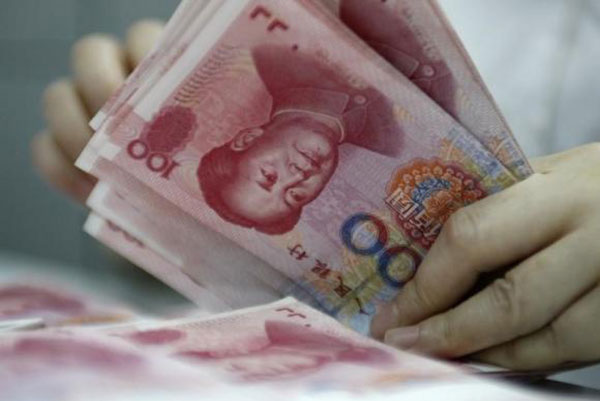Wacthdog offers banks hope on bad loans
By Li Xiang (China Daily) Updated: 2015-11-05 07:28
 |
|
An employee counts yuan banknotes at a bank in Huaibei, Anhui province June 22, 2010.[Photo/Agencies] |
The China Banking Regulatory Commission said it was monitoring the provision requirements of banks and will carry out case-by-case studies on individual lenders to help them deal with rising bad loans.
Liao Yuanyuan, deputy director of the policy research bureau at the CBRC, said that the regulator wants to maintain continuity in its regulations. What this essentially means is that, the loan-loss provision ratio, a key measure of banks' risk-control capability, will remain unchanged.
The LLP ratio is a requirement for capital that needs to be set aside by banks for future losses from nonperforming loans. Chinese banks are required to have a minimum ratio of 150 percent.
The regulator's comments came after the country's major lenders, including Industrial and Commercial Bank of China Ltd, have been reportedly lobbying the regulator to loosen the provision requirements against the backdrop of a slower economy and growing pressure on banks' business operations.
Banks have been facing headwinds like slower profit growth and rising bad loans as sectors like manufacturing, wholesale and retail, which make up the major source of banks' NPLs, continued to be under pressure.
The profit growth of major State-owned banks dropped below 1 percent in the third quarter while their NPLs have been on the rise.
By the end of September, the total NPL ratio of the country's commercial banks rose to 1.59 percent, up from 1.50 percent at the end of June, according to the regulator. Meanwhile, the LLP ratio dropped to 167.7 percent at the end of September from 198.4 percent three months earlier.
Some of the big State-owned banks have seen their LLP ratio inch toward the regulatory red line, offering them little room to leverage the ratio to expand their profit margins, analysts said.
Some banking experts have said that it is necessary for the regulator to loosen the provision ratio requirement and to promote the securitization of NPLs so as to offer banks more leverage to deal with the current tough situation.
Nonetheless, the era of easy profits for Chinese banks will likely come to an end after the Chinese central bank fully liberalized the interest rates by scrapping the cap on deposit rates, analysts said.
David Yin, a financial analyst at global credit ratings agency Moody's Investors Service Inc, said in a research note that the shrinking interest margins may prompt banks to seek higher loan yields by increasing their exposure to higher-risk clients, thereby putting their risk-control capabilities at risk.
- Commercial banks' bad loan rate continues to rise in Q3
- China's direct selling market grows
- China to deliver 50 billion express parcels by 2020
- China to make interest rates more market-based
- China, Vietnam see booming trade in agricultural products
- China gold consumption rises 7.8%
- No exact date has been set for IMF SDR basket review in Nov
- Industry expo focuses on high-end manufacturing















